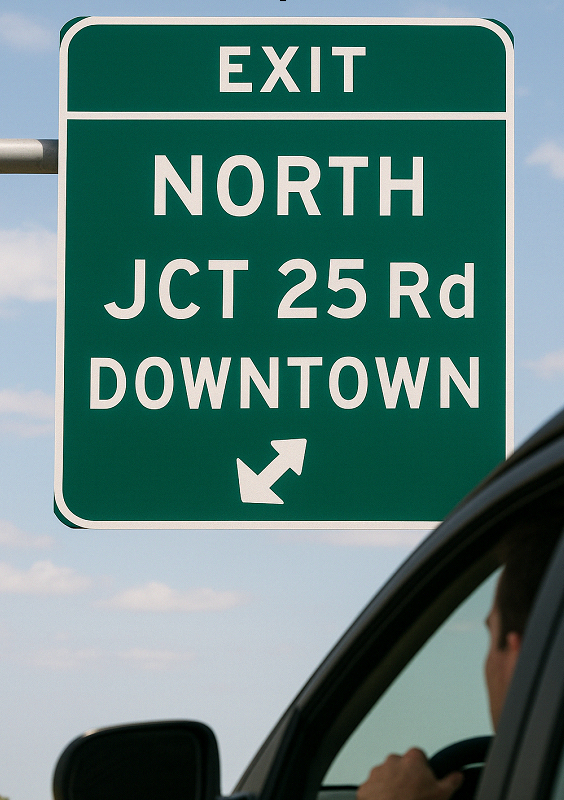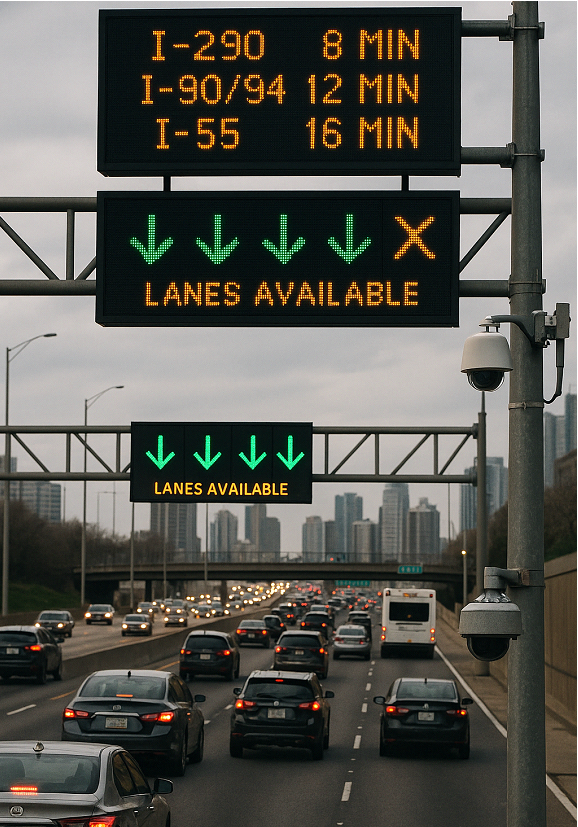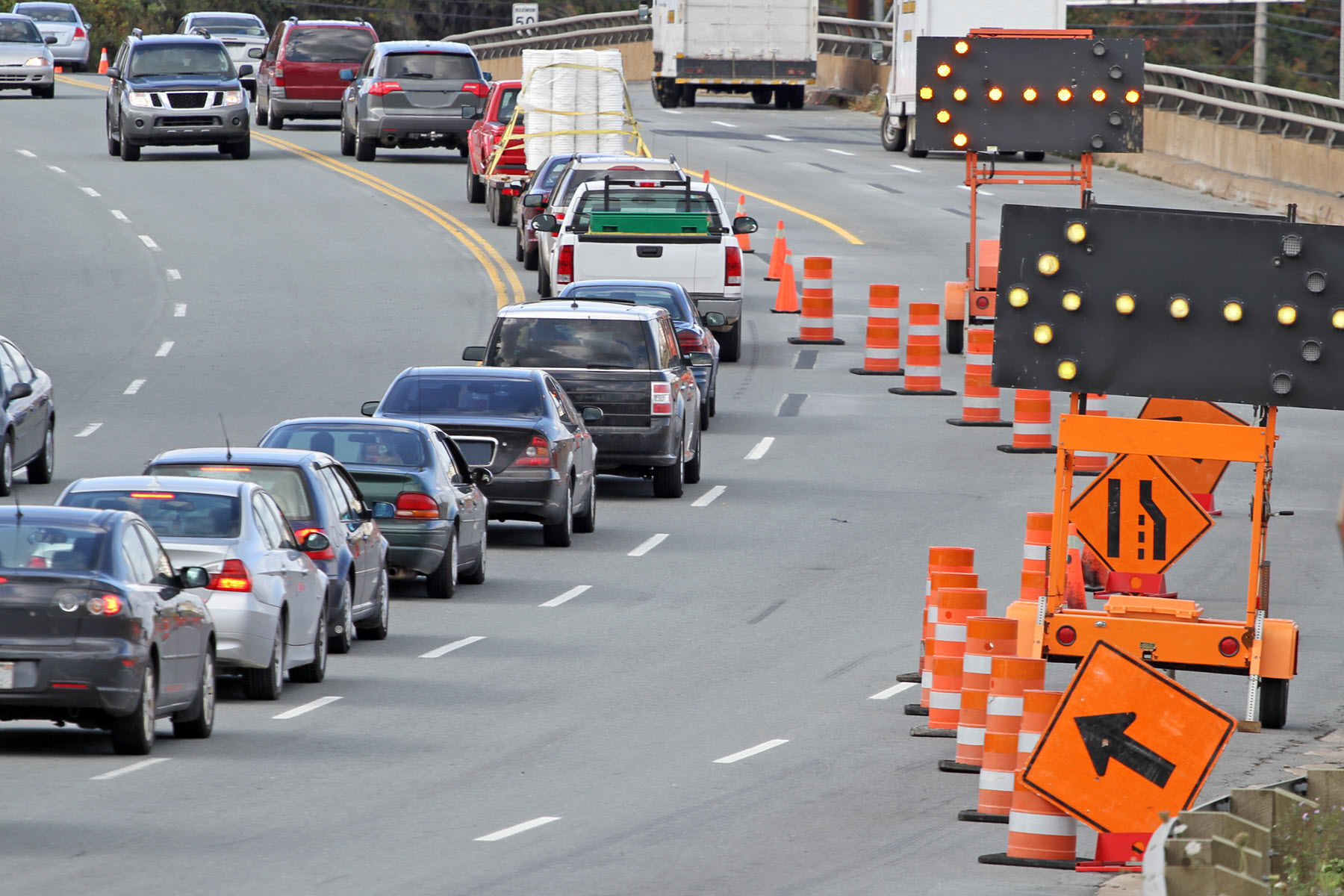
The primary objective of a guide sign message is to convey information quickly and without ambiguity. Drivers have only a few seconds to read, interpret, and respond to signage while operating a moving vehicle.
Traffic engineers use short, familiar terms to increase message recognition. Words are selected based on common usage and ease of interpretation. For example, terms like “Exit,” “North,” or “Downtown” are widely understood and immediately actionable.
Abbreviations are limited and used only when standardized and widely recognized. Examples include “JCT” for junction, “Rd” for road, and “Ave” for avenue. Engineers avoid unnecessary words or phrases that may clutter the message or slow comprehension.
Effective signs present the most important information first, followed by secondary details. This approach helps drivers focus on what is immediately necessary to navigate correctly.
For exit and directional signs, the name of the destination or intersecting road is often the primary message. Supporting information, such as route numbers or facility names, appears beneath or beside it.
At interchanges or decision points, signs are structured to emphasize directional guidance. For example, signs will highlight “Exit 45: City Center” with lane-use arrows or exit lane indicators. When multiple destinations are listed, the most prominent or closest one is usually displayed first.
Information hierarchy also extends to sign placement. Advance signs prepare drivers for decisions by giving early notice. Secondary signs at the point of decision confirm the action, such as turning or exiting.


Consistency across the roadway network is achieved through adherence to national and local guidelines. This standardization ensures that signs convey messages in a predictable and uniform manner.
The Manual on Uniform Traffic Control Devices (MUTCD) establishes standards for wording, layout, and usage of guide signs. It includes specifications for font style and size, color schemes, spacing, and sign placement.
The MUTCD outlines recommended formats for different types of primary purpose of guide signs, including interchanges, freeway exits, and service locations. These standards promote consistency across regions, reducing driver confusion and supporting reliable wayfinding.
Traffic engineers consult these guidelines during the design process. Local agencies may also maintain supplemental manuals or policies to address regional naming conventions or sign formats.
In areas where multiple languages are commonly spoken, traffic engineers face additional challenges in guide sign messaging. Balancing the need for inclusivity with the constraints of space and clarity requires careful planning.
Multilingual signs must maintain legibility and avoid overwhelming drivers with excess text. Engineers often prioritize languages based on population demographics, legal requirements, and driver familiarity. In some cases, symbols or icons are used to communicate messages without relying on language.
The addition of multiple languages can increase the size of signs, requiring adjustments in placement or support structures. Message hierarchy becomes even more important, ensuring that the most critical guidance remains prominent and readable.
Some guide signs now feature dynamic elements that change based on real-time conditions. These signs are used in high-volume or variable-traffic environments to provide updated travel information.
Examples include electronic message boards that display estimated travel times, lane status updates, or alternate route guidance. These dynamic guide signs use sensors, cameras, and traffic management systems to generate messages based on current data.
Engineers must ensure that dynamic messages follow the same principles as static signs. Clarity, brevity, and standard terminology are essential to avoid distracting or overwhelming drivers. Messages are programmed to follow preset formats and display only the most relevant data.
Dynamic guide signs are increasingly used on managed lanes, toll roads, and in urban corridors where traffic patterns shift frequently.


Traffic engineers determine guide sign messages through a structured process that emphasizes clarity, prioritization, and consistency. Messages are crafted using concise, familiar terms and arranged in a hierarchy that supports timely driver decisions. Standardization through guidelines such as the MUTCD ensures uniformity across jurisdictions .
Engineers must also address special challenges, including multilingual communication and the integration of real-time data in dynamic signs. By applying established principles and adapting to evolving transportation needs, guide sign messages continue to play a central role in roadway safety and navigation.
I provide attorneys and insurance adjusters in Mesa, AZ with the technical expertise they need in cases involving traffic accidents, roadway design, and traffic control.